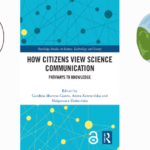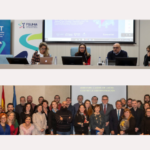ScienceFlows organises a seminar that explains to university students how to act against chemical submission drugs and the UV kit to prevent them

The kit developed by the MODeLic research group of the University of Valencia detects the drug GHB or ecstasy liquid in beverages.
ANA SERRA// Within the framework of the NOSUM project (Design and Evaluation of a personal kit to prevent sexual assaults by chemical submission), the ScienceFlows research group of the University of Valencia (UV) will carry out on July 7, 9 and 15 at 17:00 an online seminar aimed at young university students in which it will be explained what chemical submission is and the drugs used to nullify the will. In addition to this, the operation of the kit developed by the MODeLic research group of the University of Valencia that detects the drug GHB or liquid ecstasy in beverages will be presented.
After the seminar, each of the participants will be able to collect 3 kits throughout the month of July at specific points in the university. These detection kits can be used by the students any time they consider that their drinks may have been contaminated. This collaboration with the young university students is essential for the development of the project since the objective is that the kit is fast, reliable and easy to use and that it can be used in the usual contexts of consumption of alcoholic beverages. The use of these kits in real settings by the participants will ensure that they respond to the needs of the end-users.
The online sessions will take place on July 7, 9 and 15 at 5:00 p.m. The participants will be able to later collect the detection kits that they can use when they consider that there is a risk that their drinks have been contaminated
To register it will be necessary to answer a survey, choose the day of preference to attend the seminar and leave the contact information.
GHB
GHB is one of the drugs most used in crimes that seek to nullify the will of the victims. This compound, also known as liquid ecstasy, is colorless and imperceptible to the palate when dissolved in beverages. For this reason, the MoDeLiC research group of the Interuniversity Institute for Molecular Recognition and Technological Development (IDM) and the ScienceFlows group, both from the University of Valencia, have launched the NOSUM project, funded by the Ministry of Health within the National Drug Plan with the aim of developing and evaluating an easy-to-use kit that allows to quickly identify if a drink has been contaminated with γ-hydroxybutyric acid (GHB).
- La Universitat de València ha desenvolupat un kit per a detectar l’èxtasi líquid en les begudes en apenes uns segons. Informatiu A Punt Nit. 07.07.21. Link [19:10]








